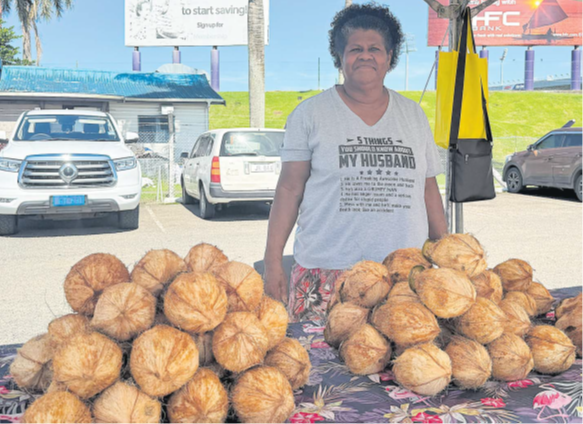STRATEGIC investments and revitalisation plans for Fiji’s coconut and copra industries formed the agenda of a meeting held in Suva last week by Government and key stakeholders.
The meeting was facilitated by Deputy Prime Minister and Minister for Trade, Co-operatives and Small and Medium Enterprises and Communications Manoa Kamikamica, and attended by Assistant Agriculture Minister Tomasi Tunabuna and executives from consumer goods company Punjas Group.
Discussions revealed that the global demand and pricing for copra had nearly doubled in recent months, increasing from $1500 to as high as $2400 a tonne.
However, a statement from the Ministry of Trade stated that Fiji’s supply of copra had struggled to meet the surge, largely attributed to senile trees, limited replanting efforts in past decades, competition with other crops like yaqona and high transport costs from outer islands.
Mr Tunabuna said coconut seedling distribution was underway through research stations and rural outreach programs.
“The ministry is also working to integrate increased demand into its upcoming budget planning and is exploring expanded support for farmers, including provision of dryers and tools to facilitate harvesting,” the Assistant Minister said.
He said the ministry would continue intensifying seedling distribution efforts and farmer engagement across the outer islands and rural areas.
According to the Trade Ministry, Punjas Group has reaffirmed its long-term commitment to the local agricultural sector.
At the meeting, Punjas Group executive Chetan Punja shared the company’s immediate plans to increase copra procurement across the country, starting with targeted mobilisation in the Lau group.
“Punjas is committed to not turning away any farmer’s copra harvest,” Mr Punja said.
“We are working with our overseas partners who are exploring investment in coconut plantations in Fiji, provided secure land leases can be arranged.
“Our objective is to scale up production, ensure value addition remains local, and contribute sustainably to rural livelihoods.”
Mr Kamikamica noted the economic potential this revitalisation held for provinces like Lau where initial mobilisation will begin.
He said with national coordination, Fiji could restart planting programs to boost provincial economies, and increase income for rural communities.
He also emphasised the importance of structured support through licensed buyers, community engagement, and long-term replanting programs.
Mr Kamikamica said they agreed in the meeting that Punjas would engage with provincial and traditional leaders in Lau to develop a collaborative model for collection and mobilisation.
He said a logistics plan for consistent shipping and supply chain coordination would be formulated in consultation with shipping agencies and the Commissioner Eastern’s office.
He added the Government would explore policy measures to support value addition within Fiji, including potential adjustments to export taxation on raw copra and a possible licensing regime to ensure all buyers contributed to the national copra fund and operate under fair, regulated standards.
The meeting also addressed shared commitments to economic empowerment through agriculture, and an intent to replicate the Lau model across the the Lomaviti group of islands, Yasawa, other locations on Viti Levu and Vanua Levu, and Rotuma.
In 2021, the Ministry of Agriculture had released a new early fruit-bearing coconut variety – Mua Hybrid Coconut – at the Mua Research Station in Taveuni on Vanua Levu as part of its efforts to boost coconut production for local and international markets.
That variety was expected to be distributed to farmers as part of efforts to revamp the industry.
The Mua Hybrid is an early fruit-bearing variety at 3-4 years – compared to Fiji Tall variety that bears fruit at 5-7 years; it is medium height reaching 10m in 20 years (compared to Fiji Tall that reaches 20-25m); and it has a better yield advantage over Fiji Tall as it recorded 1.4tonnes/hectare of copra.
The introduction of this new variety aimed to support farmers and exporters to quickly get the supply of larger volumes of coconut within a shorter period of time, and the Mua Hybrid variety had been tested to do just that.
The ministry is keen on boosting the exports of both dried and green coconuts in the export and local markets, and particularly with significant interest as well in growing the production and exports of green coconuts or bu given its enormous market and demand.
The ministry had said that copra prices had risen, coconut oil prices had also seen a substantial increase in the market and it wanted to ensure to continue to push production and supply into the market.
The Research Division of the Ministry of Agriculture commenced with coconut breeding work in the early 1980s.
Six different types of hybrids were developed and their characteristics evaluated over the years with this new Mua hybrid being the latest.

Picture: SUPPLIED/MINISTRY OF TRADE

